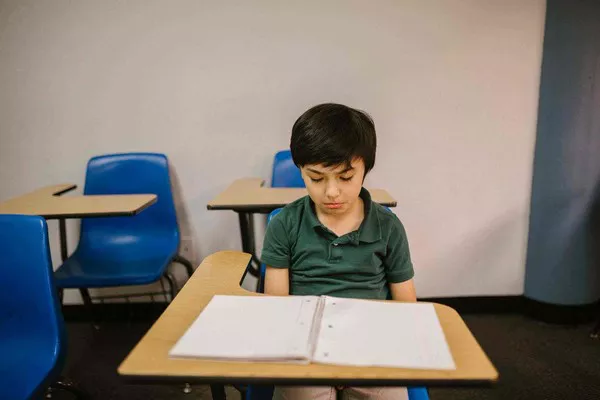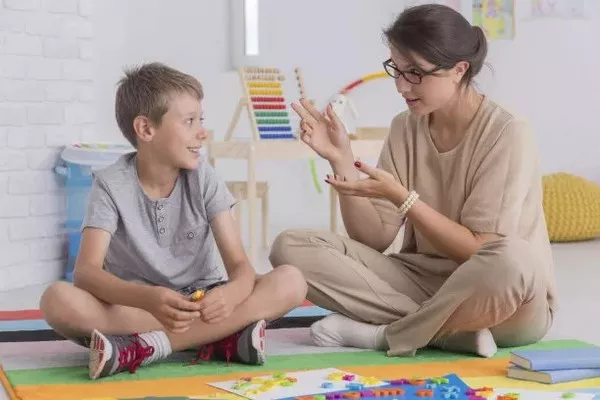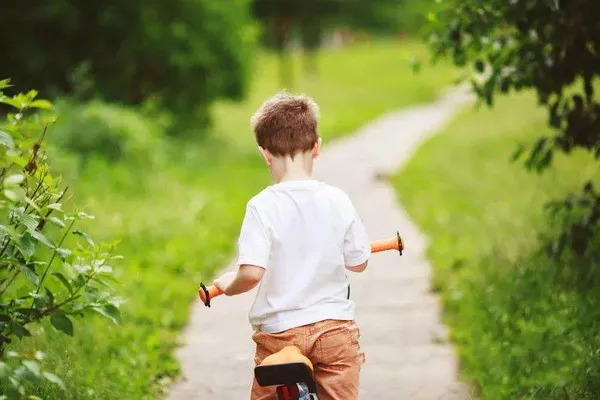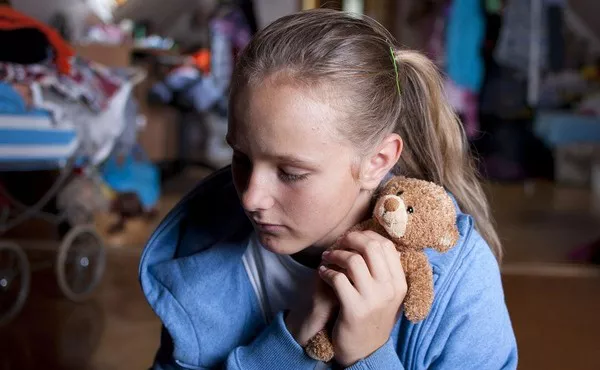Love is often described as an inexplicable and mysterious emotion, one that sweeps us off our feet when we least expect it. While romantic love is a central theme in literature, movies, and music, it is also a deeply psychological and biological phenomenon that has been studied for decades. From a psychological perspective, falling in love is not merely a result of chance or fate; it is influenced by a complex interplay of factors—biological, psychological, social, and environmental—that come together to form emotional, physical, and intellectual connections between individuals. This article explores what determines whether we fall in love, delving into the science and psychology behind romantic attraction and attachment.
Biological Factors: The Science of Attraction
At the core of romantic love lies a series of biological processes involving the brain and body. These processes influence our emotional and physical responses to potential partners, setting the stage for the development of love.
1. Brain Chemistry and Neurotransmitters: The Power of Attraction
When we experience romantic attraction, our brains are flooded with a range of neurotransmitters that shape our emotional and physical responses. Two key players in this process are dopamine and oxytocin.
Dopamine: Known as the “feel-good” neurotransmitter, dopamine is released when we encounter something pleasurable or rewarding. In the context of falling in love, dopamine plays a critical role in the feelings of excitement, joy, and motivation associated with romantic attraction. When we meet someone who sparks our interest, the brain releases dopamine, making us feel euphoric, energetic, and drawn to them. This sense of pleasure encourages us to seek out further interactions with the person, strengthening the bond.
Oxytocin: Often referred to as the “bonding” hormone, oxytocin plays a central role in creating emotional connections and attachment. It is released during physical touch, such as hugging, kissing, or intimacy, and helps deepen emotional ties between partners. Oxytocin fosters feelings of trust, affection, and intimacy, creating a foundation for long-term attachment. It is often linked to the emotional “glue” that holds couples together, even in the face of challenges.
Serotonin: This neurotransmitter regulates mood and emotions, and during the early stages of romantic attraction, serotonin levels can fluctuate, leading to feelings of obsession and preoccupation with a partner. Serotonin levels in people who are falling in love often resemble those of individuals with obsessive-compulsive disorder (OCD), which can help explain why new lovers often find themselves thinking about their partner constantly.
Together, these chemical messengers create the intense feelings of infatuation, desire, and attachment that accompany falling in love. The release of dopamine provides the initial spark of attraction, while oxytocin and serotonin contribute to the formation of a deeper emotional bond.
2. Evolutionary Biology: The Survival Mechanism Behind Love
From an evolutionary perspective, love may have developed as a mechanism to ensure the survival and reproduction of the human species. According to evolutionary psychologists, love serves to promote behaviors that are beneficial for the survival of offspring and the continuity of the human species.
Mate Selection: Evolutionary theory suggests that people are subconsciously drawn to partners who display traits that are indicative of good genetic fitness, such as physical health, strength, or intelligence. These traits increase the likelihood of successful reproduction and the survival of offspring. This idea is supported by research that suggests individuals are more attracted to people who exhibit physical features, such as symmetry in the face or body, which signal genetic health.
Attachment and Pair Bonding: From a reproductive standpoint, love also serves to facilitate long-term pair bonding between individuals, which increases the likelihood of cooperative parenting. The bonding hormones oxytocin and vasopressin are thought to help create lasting attachments between couples, ensuring that parents stay together to care for their children. The emotional bonds formed in romantic relationships are not just about passion; they serve a functional purpose in promoting caregiving behaviors and social stability.
Psychological Factors: Cognitive and Emotional Influences
While biology plays a significant role in love, psychological factors are just as important. These factors shape our perception of attraction, influence our expectations in relationships, and determine how we interpret romantic feelings.
1. Personality and Attachment Styles: How We Relate to Others
Each person’s attachment style, formed in early childhood based on their relationship with caregivers, plays a key role in determining how they approach romantic relationships later in life. Attachment theory, developed by John Bowlby and Mary Ainsworth, identifies several attachment styles that can influence how people fall in love:
Secure Attachment: Individuals with a secure attachment style are comfortable with intimacy, trust others easily, and have healthy expectations of relationships. They tend to fall in love more readily, as they feel secure and open to connection. They are also more likely to develop lasting, fulfilling relationships.
Anxious Attachment: Those with an anxious attachment style tend to seek constant reassurance and validation in relationships, often fearing abandonment. They may fall in love quickly but can experience intense anxiety and insecurity, making the process of falling in love more turbulent and prone to emotional highs and lows.
Avoidant Attachment: People with an avoidant attachment style may struggle with intimacy and prefer to maintain emotional distance. They may avoid falling in love or take longer to form attachments, as they have a tendency to push others away due to fears of dependency or vulnerability.
Understanding attachment styles helps explain why some people are more inclined to fall in love quickly, while others may find it challenging to form deep emotional connections. Our past experiences shape how we interact with others, which can influence the speed and intensity with which we fall in love.
2. Similarity and Reciprocity: The Power of Shared Connections
Psychological research has long shown that similarity and reciprocity are strong predictors of romantic attraction. People are more likely to fall in love with those who share similar values, interests, attitudes, and even physical characteristics.
Similarity: Similarity in personality traits, life goals, and core values fosters a sense of familiarity and mutual understanding, which can make a relationship feel secure and comfortable. Couples who share similar beliefs and interests are more likely to build a lasting connection, as they can relate to each other’s experiences and perspectives.
Reciprocity: The concept of reciprocal liking suggests that we are more likely to develop feelings of love for someone who shows an interest or affection toward us. When someone demonstrates that they like us, we are more likely to feel positively toward them in return. This mutual exchange of affection creates a reinforcing cycle that deepens emotional bonds and increases the likelihood of falling in love.
3. Emotional Availability and Readiness for Love
Sometimes, the timing of a person’s emotional state and readiness for love can significantly affect whether they fall in love. Emotional availability refers to an individual’s ability to engage in a meaningful and emotionally intimate relationship. If someone is still processing past emotional wounds, such as a previous breakup, or is not open to vulnerability, they may find it difficult to form new romantic attachments, regardless of how compatible they are with a potential partner.
Emotional readiness also plays a significant role. People who are seeking love are more likely to recognize and reciprocate feelings of attraction, while those who are focused on other areas of their lives, such as career or personal growth, may not be as open to romantic connections.
Social and Environmental Factors: The Role of Context
Beyond biology and psychology, social and environmental factors also influence whether we fall in love. These factors include our social environment, the context in which we meet potential partners, and even cultural influences that shape our views on love and relationships.
1. Proximity and Familiarity: The Mere Exposure Effect
According to the mere exposure effect, we are more likely to fall in love with someone we encounter frequently. Proximity plays a crucial role in the development of attraction, as repeated exposure to someone increases the chances of forming a bond. This is why many romantic relationships develop in environments where people are in close contact, such as workplaces, schools, or social circles.
2. Shared Experiences and Emotional Intensity
The intensity of shared experiences can also accelerate the process of falling in love. When two people go through emotionally charged or significant experiences together, such as traveling, overcoming challenges, or experiencing personal growth, their bond is often strengthened. These shared experiences create a sense of mutual understanding, trust, and emotional connection that can catalyze the development of love.
Conclusion
The question of what determines whether we fall in love is complex and multifaceted, shaped by an interplay of biological, psychological, and environmental factors. From the chemical reactions in our brains to our attachment styles and the context in which we meet others, the experience of falling in love is influenced by a variety of forces. While it may feel magical and unpredictable, love is a deeply rooted process that combines our biology, emotions, past experiences, and the environments we navigate.
Ultimately, falling in love is a deeply personal and unique journey for each individual, shaped by the convergence of all these factors. Understanding the science and psychology behind love can provide insight into our romantic experiences, helping us to form healthier, more fulfilling relationships.
Related topics:




























